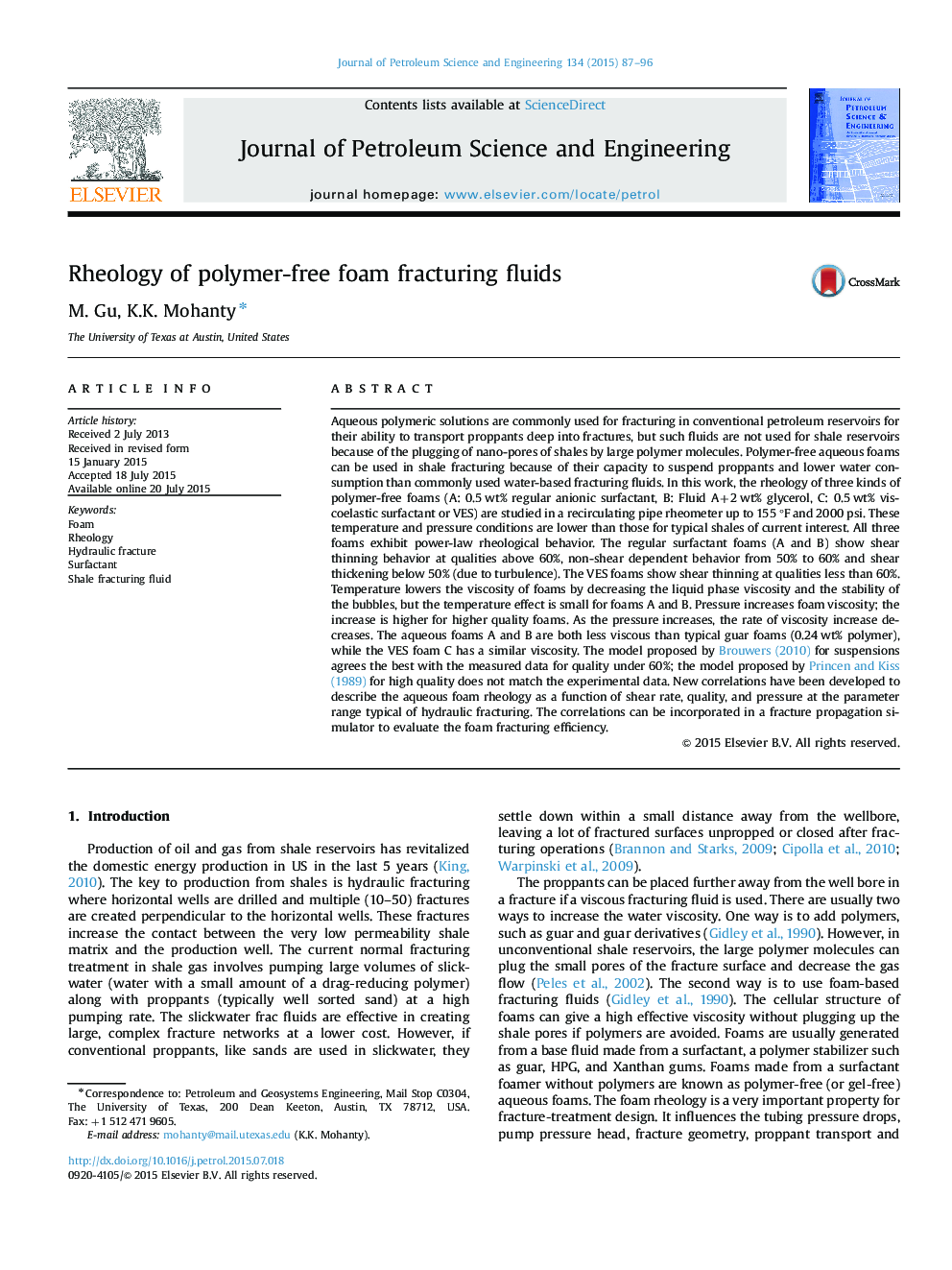| کد مقاله | کد نشریه | سال انتشار | مقاله انگلیسی | نسخه تمام متن |
|---|---|---|---|---|
| 1754668 | 1522807 | 2015 | 10 صفحه PDF | دانلود رایگان |
• Foams with typical anionic surfactants are less viscous than typical guar foams.
• Foams with viscoelastic surfactants have similar viscosity as typical guar foams.
• Anionic surfactant foams are shear-thinning at qualities above 60%.
• Temperature does not affect the foam viscosity significantly.
• Pressure increases the foam viscosity at a high quality.
Aqueous polymeric solutions are commonly used for fracturing in conventional petroleum reservoirs for their ability to transport proppants deep into fractures, but such fluids are not used for shale reservoirs because of the plugging of nano-pores of shales by large polymer molecules. Polymer-free aqueous foams can be used in shale fracturing because of their capacity to suspend proppants and lower water consumption than commonly used water-based fracturing fluids. In this work, the rheology of three kinds of polymer-free foams (A: 0.5 wt% regular anionic surfactant, B: Fluid A+2 wt% glycerol, C: 0.5 wt% viscoelastic surfactant or VES) are studied in a recirculating pipe rheometer up to 155 °F and 2000 psi. These temperature and pressure conditions are lower than those for typical shales of current interest. All three foams exhibit power-law rheological behavior. The regular surfactant foams (A and B) show shear thinning behavior at qualities above 60%, non-shear dependent behavior from 50% to 60% and shear thickening below 50% (due to turbulence). The VES foams show shear thinning at qualities less than 60%. Temperature lowers the viscosity of foams by decreasing the liquid phase viscosity and the stability of the bubbles, but the temperature effect is small for foams A and B. Pressure increases foam viscosity; the increase is higher for higher quality foams. As the pressure increases, the rate of viscosity increase decreases. The aqueous foams A and B are both less viscous than typical guar foams (0.24 wt% polymer), while the VES foam C has a similar viscosity. The model proposed by Brouwers (2010) for suspensions agrees the best with the measured data for quality under 60%; the model proposed by Princen and Kiss (1989) for high quality does not match the experimental data. New correlations have been developed to describe the aqueous foam rheology as a function of shear rate, quality, and pressure at the parameter range typical of hydraulic fracturing. The correlations can be incorporated in a fracture propagation simulator to evaluate the foam fracturing efficiency.
Journal: Journal of Petroleum Science and Engineering - Volume 134, October 2015, Pages 87–96
